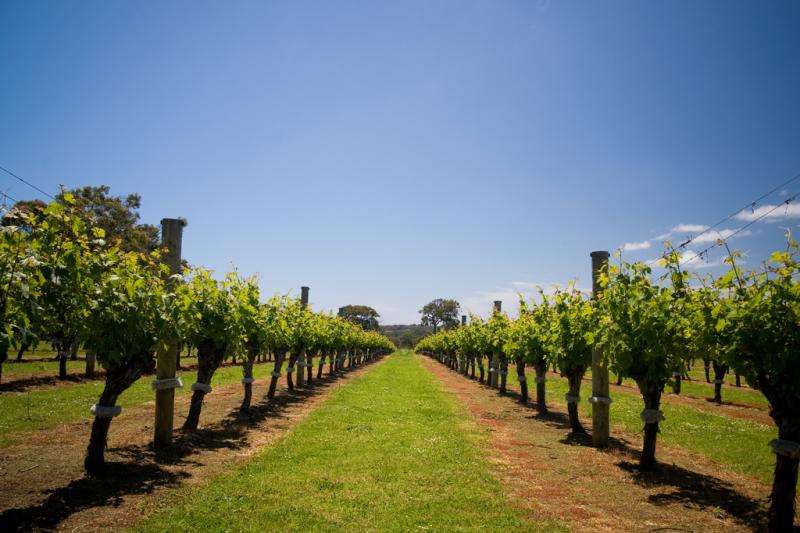Local drop to maintain quality in face of climate change

WA wine producers appear to be lagging behind their South Australian counterparts in implementing climate change strategies, although research suggests this isn't going to adversely affect the quality of local wines.
With the exception of alternative packaging and energy-efficient technology in buildings, Curtin University Professor Jeremy Galbreath says, SA is doing more in areas of climate mitigation innovations.
These include using alternative energy sources and fuels and reducing agrichemicals.
They're also being more proactive in adaptive innovations.
"South Australia has a higher implementation rate on water-saving techniques in the winery, purchase of new vineyard locations better suited to climate, vineyard row orientations and the growth of new grape varieties better suited to hotter temperatures," Prof Galbreath says.
They're also more likely to have signed on with Wine Australia's environmental management system, EntWine, which allows producers to show they're engaged in environmental practices consistent with international standard.
Prof Galbreath's current study into climate change innovations in Australian wine regions found approximately 60 per cent of SA producers have implemented EntWine compared to 14 per cent in WA.
In part, he attributes this difference to SA wine producers having a longer history and more experience in implementing new information from their networks, and differences in how climate change will impact each state.
Modelling tips high-quality WA vintages
Environmental change modelling shows WA wine regions will actually produce more frequent higher-quality vintages for later-maturing varieties such as Cabernet Sauvignon and improved vintages for varieties such as Tempranillo, according to Department of Agriculture and Food WA Glynn Ward.
"Water supply is expected to be the main challenge," Mr Ward says.
"Climate change is expected to reduce water supply by up to 20 per cent and increase evaporation by up to 30 per cent."
This has prompted local research into water-harvesting techniques and dam covers tipped to reduce evaporation by up to 30 per cent.
WA producers are also focusing on vineyard management practices to minimise the impact of extreme heat and wind events on fruit and wine quality, such as testing shade clothes and commercially available sprays designed to minimise sunburn on fruit.
The most ambitious work underway, Mr Ward says, is the creation of fine-scale regional climate maps charting conditions down to 1km2 grids for major growing areas.
These will help with on-site management, including helping producers decide the best locations for varieties and where to place wind breaks.
More information: Jeremy Galbreath. Exploratory Study of Climate Change Innovations in Wine Regions in Australia, Regional Studies (2015). DOI: 10.1080/00343404.2015.1073849
Provided by Science Network WA
This article first appeared on ScienceNetwork Western Australia a science news website based at Scitech.


















